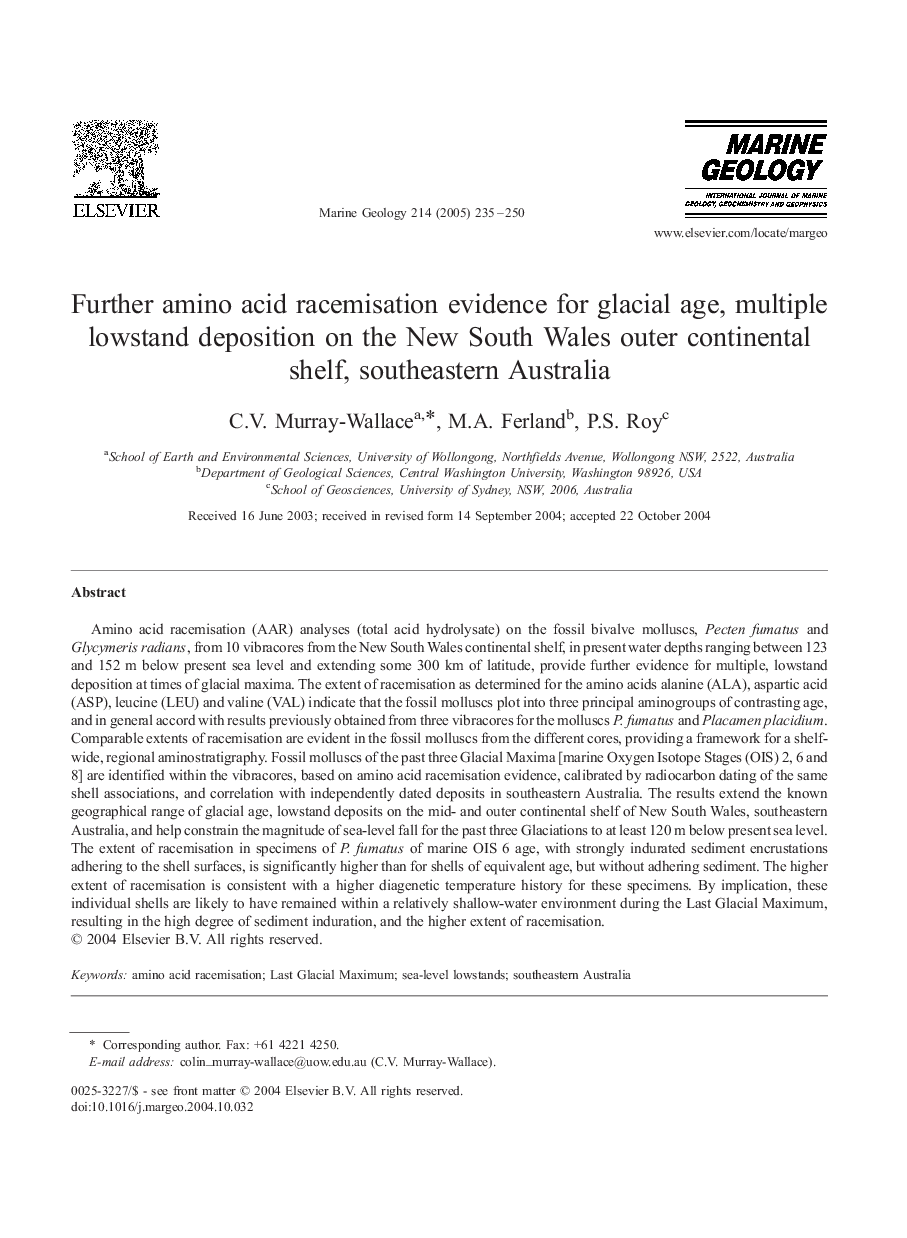| کد مقاله | کد نشریه | سال انتشار | مقاله انگلیسی | نسخه تمام متن |
|---|---|---|---|---|
| 9532812 | 1639230 | 2005 | 16 صفحه PDF | دانلود رایگان |
عنوان انگلیسی مقاله ISI
Further amino acid racemisation evidence for glacial age, multiple lowstand deposition on the New South Wales outer continental shelf, southeastern Australia
دانلود مقاله + سفارش ترجمه
دانلود مقاله ISI انگلیسی
رایگان برای ایرانیان
کلمات کلیدی
موضوعات مرتبط
مهندسی و علوم پایه
علوم زمین و سیارات
ژئوشیمی و پترولوژی
پیش نمایش صفحه اول مقاله

چکیده انگلیسی
Amino acid racemisation (AAR) analyses (total acid hydrolysate) on the fossil bivalve molluscs, Pecten fumatus and Glycymeris radians, from 10 vibracores from the New South Wales continental shelf, in present water depths ranging between 123 and 152 m below present sea level and extending some 300 km of latitude, provide further evidence for multiple, lowstand deposition at times of glacial maxima. The extent of racemisation as determined for the amino acids alanine (ALA), aspartic acid (ASP), leucine (LEU) and valine (VAL) indicate that the fossil molluscs plot into three principal aminogroups of contrasting age, and in general accord with results previously obtained from three vibracores for the molluscs P. fumatus and Placamen placidium. Comparable extents of racemisation are evident in the fossil molluscs from the different cores, providing a framework for a shelf-wide, regional aminostratigraphy. Fossil molluscs of the past three Glacial Maxima [marine Oxygen Isotope Stages (OIS) 2, 6 and 8] are identified within the vibracores, based on amino acid racemisation evidence, calibrated by radiocarbon dating of the same shell associations, and correlation with independently dated deposits in southeastern Australia. The results extend the known geographical range of glacial age, lowstand deposits on the mid- and outer continental shelf of New South Wales, southeastern Australia, and help constrain the magnitude of sea-level fall for the past three Glaciations to at least 120 m below present sea level. The extent of racemisation in specimens of P. fumatus of marine OIS 6 age, with strongly indurated sediment encrustations adhering to the shell surfaces, is significantly higher than for shells of equivalent age, but without adhering sediment. The higher extent of racemisation is consistent with a higher diagenetic temperature history for these specimens. By implication, these individual shells are likely to have remained within a relatively shallow-water environment during the Last Glacial Maximum, resulting in the high degree of sediment induration, and the higher extent of racemisation.
ناشر
Database: Elsevier - ScienceDirect (ساینس دایرکت)
Journal: Marine Geology - Volume 214, Issues 1â3, 30 January 2005, Pages 235-250
Journal: Marine Geology - Volume 214, Issues 1â3, 30 January 2005, Pages 235-250
نویسندگان
C.V. Murray-Wallace, M.A. Ferland, P.S. Roy,